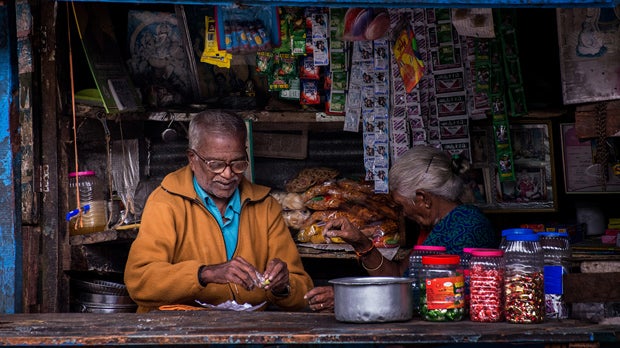Merchant Payments: What About the Customers?
In the ongoing blog series on merchant payments we’ve discussed several aspects of that business, including interoperability, user experience, branding, acquiring models and how to build genuine value for merchants around the payments piece.
But what about the end customers — the people actually making the purchases? While there's a case to be made that merchants can exercise some influence over customers' payment decisions — and we have some tentative data points backing that up — clearly, to an overwhelming degree, the fate of merchant payments will be decided by customers on their own terms. Will they see enough value in going digital to change age-old behaviors and eschew cash?
In many ways, this is the harder part of the equation. It is not hard to come up with ideas for value-added services built on top of payments that should be compelling enough to get merchants to buy in. We have sketched out a number of concepts, and surely there are many more that can be developed. But for end customers, such ideas seem to be in shorter supply and more difficult to implement. For instance, building a budget manager or personal finance tool that really works for the typical low-income user in a developing country is a lot harder than it sounds, for reasons that have little to do with technology or product design.
The most obvious lever to pull is loyalty reward schemes, which have been put to effective use around credit cards and are being built into nearly every major digital wallet offering in the United States, including Apple Pay, Android Pay and Samsung Pay. There's every reason to believe these will work just as well in emerging markets — or potentially even better, as getting the 10th purchase free might matter considerably more to the average Tanzanian than a Bay Area millennial flex-working from Starbucks.
To help providers take the next steps in thinking about this, CGAP has studied loyalty models in the retail space and how they might apply to merchant payments. On that basis, we then sketched out several concrete concepts for loyalty models that engage merchants as well as customers, which providers can consider in developing their own reward schemes.
There may, however, be a more fundamental challenge to unlocking the consumer side of merchant payments: wallet balances. While hard data are scarce, anecdotal evidence from across markets suggests that the average amount kept on wallets tends to remain low, even among active users. And since it's hard to spend money you don't have, this poses a formidable problem.
Aside from strengthening the value proposition around the wallet — which must be at the heart of the effort and is where loyalty reward schemes can play a role — this will have to involve a much greater focus on the inflow of electronic money (i.e., how people receive their incomes). Most large providers already offer bulk payments products for corporate salaries, but we have yet to see those solutions really scale, even in markets with substantial take-up of mobile wallets.

Getting more incomes to be paid digitally will require not only renewed effort on such products, but a greater variety of solutions for smaller salary payers like household and small businesses. In fact, payroll management makes for a great value-added service to get merchants committed to digital payments in the first place. As always, such products need to add genuine value for payers as well as payees and more innovation may be required to make them compelling enough to gain widespread uptake. While payroll is not the sexiest topic in the DFS space, it could well be one of the most important.
We may, however, also see providers pursue another option to overcome the challenge of low balances for retail payments: taking a cue from cards to make mobile money inherently a credit product rather than a debit one. For many large providers, the pieces are already in place. In Kenya, millions of M-PESA users already have an M-Shwari credit limit; in technical terms, it may be trivial for Safaricom and the Commercial Bank of Africa to make it an overdraft product rather than a discrete one-time loan requiring an application process each time. In so doing, they would in a stroke raise the spendable limit for those customers by their loan limit—on average $35—perhaps accessible only through their Lipa na M-PESA retail payments product rather than for M-PESA overall.
Needless to say, there is very good reason to be wary of such a development. As CGAP and others have noted, even with existing products there are considerable consumer protection concerns around the super-heated market for digital credit. Making credit even easier to access is fraught with risk, particularly when offered to customers with weak financial literacy skills. Concerns around cost and over-indebtedness are real and serious—particularly if such a product were coupled with a loyalty rewards scheme. Given the importance of these concerns, we will dedicate an upcoming post to exploring them more in depth.
That said, such a development could also offer potential benefits. To the extent that it were to help drive the use of digital payments as well as credit, it would serve to strengthen the credit scoring models of the providers, better equipping them to differentiate between borrowers who have the repayment capacity and those who don't — and expanding access further for the former. More importantly, it could offer low-income households greater flexibility to manage the unpredictable cash flow and expenditure shocks that we know is one of their most formidable challenges.
Do the potential benefits outweigh the risks? It is far from clear. But as digital credit products proliferate and ever more providers venture into merchant payments, the likelihood of someone trying it is growing. Hence, it is a conversation that needs to start now among business developers, risk managers, regulators and consumer protection specialists to figure out if there are ways to harness the positive impacts while mitigating the harmful ones. Please join in that conversation by giving us your thoughts in the comments below.




Add new comment